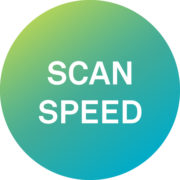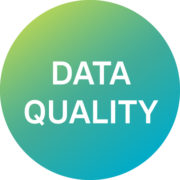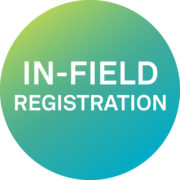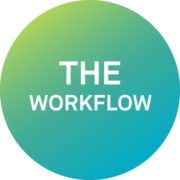Digital transformation is changing methods and workflows in the vast majority of industries. In the field of public safety, the capture of exact, accurate data that can be stored and revisited is essential. 3D laser scanning is therefore fast becoming a standard part of the toolkit used by law enforcement professionals working on crime or crash scenes.
3D laser scanners capture comprehensive data, allowing investigators to document scenes in a matter of minutes. But as the technology soars in popularity, the market has become saturated with options.
Determining the right 3D laser scanner to best match your needs can present a challenge, with a range of alternatives available when it comes to scan speed, data quality and accuracy. Here are five key things to consider before you make an informed purchase:
-
Scan speed
 Speed is of the essence when documenting the scene of an incident so that the area can be cleared, minimising disruption and hazards.
Speed is of the essence when documenting the scene of an incident so that the area can be cleared, minimising disruption and hazards.
3D laser scanners capture data through 360-degree images and millions of accurate measurement points known as point clouds. In addition, investigations often require High-Dynamic Range (HDR) images captured alongside high-resolution scans to facilitate viewing a scene in minute detail.
The Leica RTC360 3D laser scanner scans at two million points per second (pps) and captures a full-dome HDR image in less than one minute. A full high-resolution scan of a scene, with true HDR imagery at a 10-metre range takes less than three minutes to complete. If you do not require HDR images, the RTC360 allows you to complete a scan in less than 30 seconds when running at maximum speed.
-
Data quality
 The need to minimise disruption to the public cannot compromise the quality of the data captured. When performing scans for public safety applications, every data point must be accurate and points cannot be deleted, filtered or averaged, as they could well contain evidence critical to completing an investigation.
The need to minimise disruption to the public cannot compromise the quality of the data captured. When performing scans for public safety applications, every data point must be accurate and points cannot be deleted, filtered or averaged, as they could well contain evidence critical to completing an investigation.
When assessing the difference in quality between laser scanners, there are a few things to look out for. A high-quality laser scanner will always provide complete, clean data, with no invalid points and a minimum of range noise. The data should also be geometrically accurate, matching the real-world objects scanned. With current technology, high speed should be a given. A top-grade laser scanner will automatically deliver the best quality possible, without requiring you to compromise on quality to avoid hours of scanning.
It’s vital to note that unless a laser scanner meets the standards of a scientific instrument, the scan data will not count as evidence in the courtroom, but merely as a demonstrative aid. To meet the required standard, choose a manufacturer that publishes the scanner’s 3D positional accuracy.
-
In-field registration capability
 Optimising the in-field registration and the ability to annotate data with tags, using Leica Cyclone FIELD 360 for example, can greatly improve later analysis and is easiest to do by someone physically present. Performing manual adjustments can act as a safeguard against having to rescan setups if they don’t register the first time correctly.
Optimising the in-field registration and the ability to annotate data with tags, using Leica Cyclone FIELD 360 for example, can greatly improve later analysis and is easiest to do by someone physically present. Performing manual adjustments can act as a safeguard against having to rescan setups if they don’t register the first time correctly.
It’s essential to consider the complete data flow of the system, as well as the computing requirements; using a tablet computer or mobile device instead of a high-performance notebook while at the scene will be much easier. With the ability to track the live position of the laser scanner in the field and visualise the scan data, a public safety professional can be confident they’ve captured everything before clearing or reopening the scene.
-
Ease of operation and portability
 Crime or crash scenes are often challenging to access and document. With every site presenting unique problems, equipment that is easily operated and manoeuvred can make a world of difference. Traditional methods require a whole assortment of equipment, such as cameras and tape measures, to be brought onto the scene. In contrast, some 3D laser scanners are highly portable and do not require extensive training to be used with precision.
Crime or crash scenes are often challenging to access and document. With every site presenting unique problems, equipment that is easily operated and manoeuvred can make a world of difference. Traditional methods require a whole assortment of equipment, such as cameras and tape measures, to be brought onto the scene. In contrast, some 3D laser scanners are highly portable and do not require extensive training to be used with precision.
A 3D imaging laser scanner such as the Leica BLK360 is small and lightweight. Along with the collapsible tripod, it is compact enough to fit into most bags or backpacks. This helps when other forensic equipment, such as medical kits or additional light sources are also needed. The intuitive one-button operation ensures it can be confidently operated with minimal training.
-
The workflow
 Once the data has been captured on-site, investigators can use reconstruction software to pull the digital datasets together. For processing the data, point cloud registration software such as the Leica Cyclone REGISTER 360 handles projects at any scale with ease, simplifying complex workflows.
Once the data has been captured on-site, investigators can use reconstruction software to pull the digital datasets together. For processing the data, point cloud registration software such as the Leica Cyclone REGISTER 360 handles projects at any scale with ease, simplifying complex workflows.
REGISTER 360 places the user at the centre of their projects and is intuitive enough to be used at any skill level, delivering accurate results at speed. With automated registration, it guides public safety professionals through the creation of client-ready deliverables and can be used as a standalone solution.
You can also choose to integrate it as part of an end-to-end digital reality solution. Once data registration is complete, the Leica Incident Mapping Software can then be deployed to build immersive 360-degree visualisations which can be explored in the comfort of the office and later presented in court.
Part of the Incident Mapping Suite, Leica Map360 is a diagramming software with an engineering-grade CAD engine and easy to use tools that enhance the quality of incident reconstructions and courtroom exhibits.
Public safety professionals can explore a scene from multiple angles or use Witness Viewpoints to look around a reconstructed scene; a simple way to determine what a witness could or could not have seen. Analysis tools are provided to verify the data accuracy and help calculate speed, momentum and crush, significantly reducing the time needed to analyse bullet trajectories and bloodstain impact patterns from the evidence measured at the scene. Customise your diagram with various views to highlight critical areas of the scene and easily and effectively communicate the scene and critical evidence with embedded attachments in an Evidence Report.
Map360 provides three editions with a consistent user interface allowing the software to evolve with the experience of the user, the technology being used and the complexity of the scenes. An advanced workspace is also available that contains the full suite of CAD tools. Map360 offers more customisation options than any other program to fit individuals’ needs allowing them to work more efficiently.
Configuring the software to match different skill levels is easy, due to multiple user interfaces. The advanced mode can also be switched on or off depending on the specific needs of the case; if a 2D diagram is all that is needed to solve a problem in a hurry, simple sketch mode is the answer.
The future of presenting evidence
3D laser scanning enables investigators to move beyond traditional formats for presenting evidence by allowing you to construct court-ready visualisations. In addition, as demonstrative aids, these visualisations can be instrumental in helping witness memory and revisiting the scene of the incident exactly as it was months or even years later.
Contact our Public Safety experts for crime documentation and reconstruction, accident investigation or fire investigation solutions.
Contact us to find out more about our 3D laser scanning solutions.














